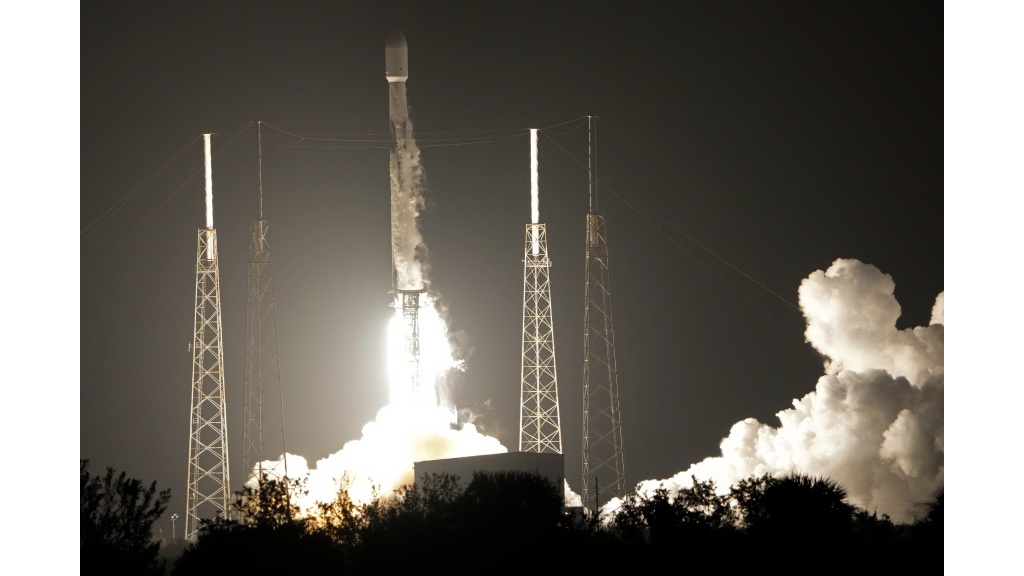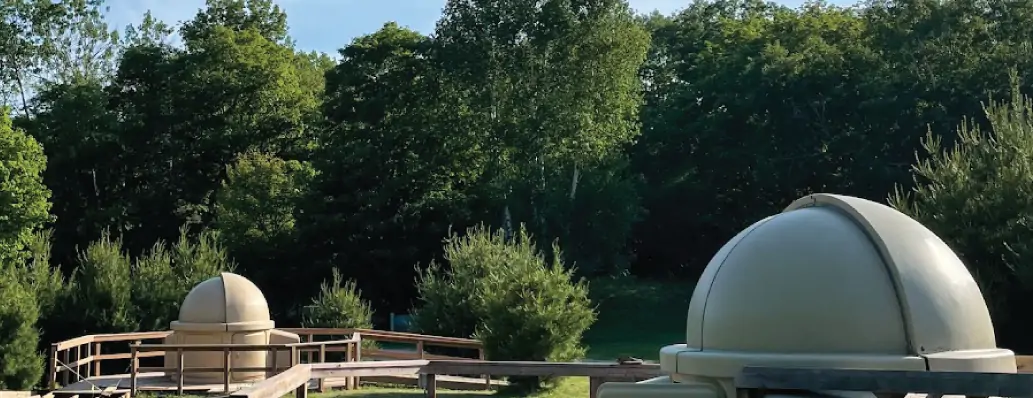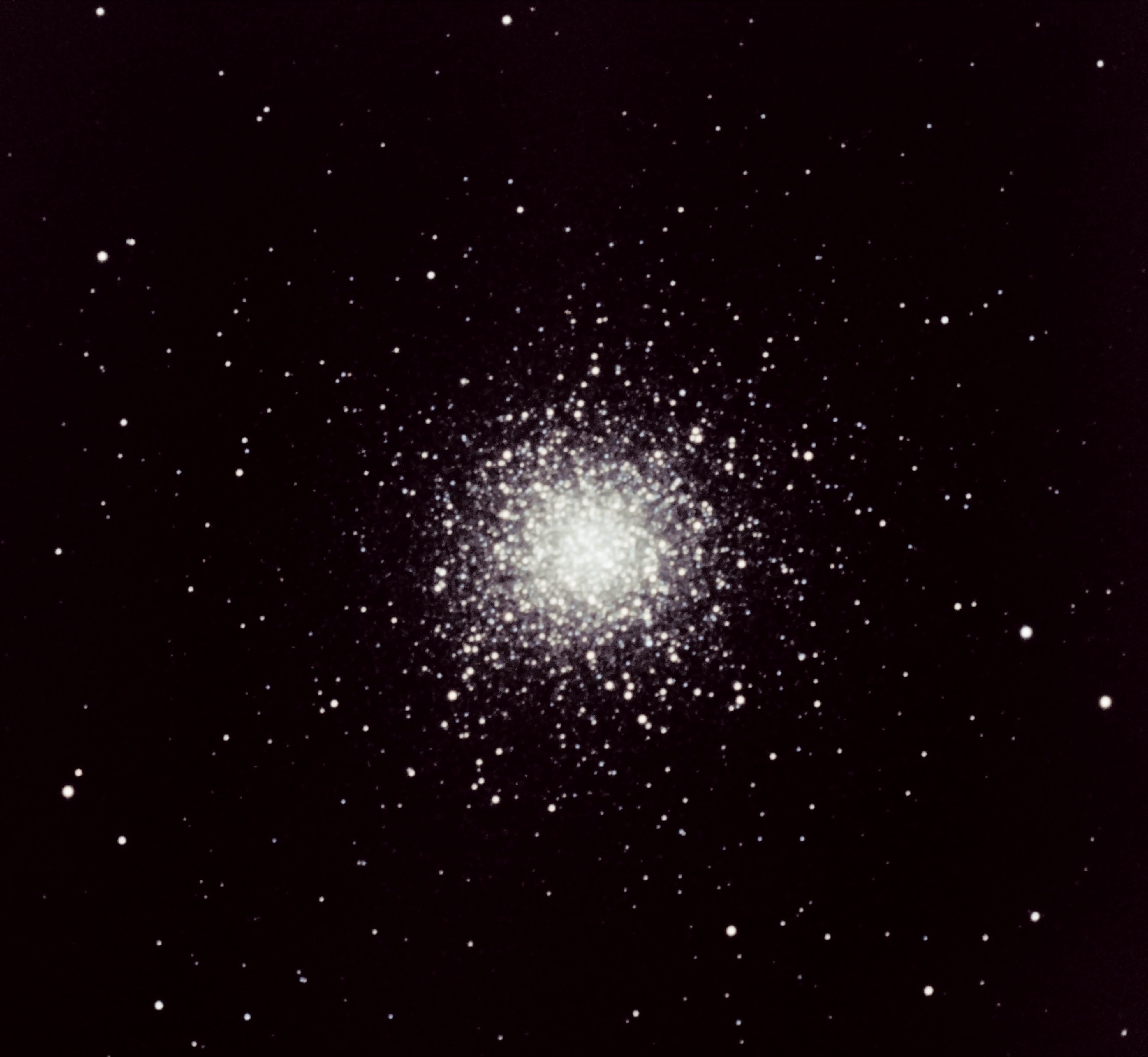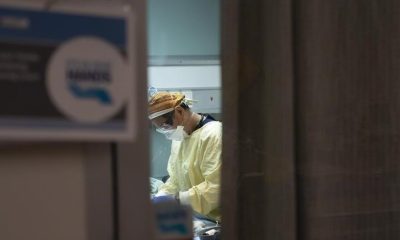Science
Japan becomes the fifth country to land a spacecraft on the moon | Loop Caribbean News – Loop News Caribbean

Japan became the fifth country in history to reach the moon when one of its spacecrafts without astronauts successfully made a soft landing on the lunar surface early Saturday.
However, space officials said they needed more time to analyse whether the Smart Lander for Investigating Moon, or SLIM, achieved its mission priority of making a pinpoint landing. They also said the craft’s solar panel had failed to generate power, which could shorten its activity on the moon.
Space officials believe that the SLIM’s small rovers were launched as planned and that data was being transmitted back to Earth, said Hitoshi Kuninaka, head of the Institute of Space and Astronautical Science, a unit of Japan’s space agency.
But he said that SLIM’s solar battery wasn’t generating power and that it had only a few more hours of battery life. He said the priority was for the craft to gather as much data about its landing and the moon as possible on the remaining battery.
Japan follows the United States, the Soviet Union, China and India in reaching the moon.
Kuninaka said he believes that Japan’s space program at least achieved “minimum” success.
SLIM landed on the moon at about 12:20am Tokyo time Saturday (1520 GMT Friday).
There was a tense wait for news after the Japan Aerospace Exploration Agency’s mission control initially said that SLIM was on the lunar surface, but that it was still “checking its status.” No further details were given until a news conference nearly two hours later.
For the mission to be considered fully successful, space officials needed to confirm whether SLIM made a pinpoint landing. Kuninaka said that while more time was needed, he personally thought it was most likely achieved, based on his observation of data showing the spacecraft’s movement until the landing and its ability to transmit signals after landing. He said the solar panel is possibly not in the planned angle, but there is still hope.
Despite the solar panel issue, “it’s delightful news,” Prime Minister Fumio Kishida said in a message posted on X, formerly known as Twitter, pledging the government’s continuing backing for the endeavours toward new challenges.
NASA Administrator Bill Nelson also lauded SLIM’s landing with an X message, congratulating Japan “on being the historic 5th country to land successfully on the Moon! We value our partnership in the cosmos and continued collaboration” in the US-led multinational Artemis Moon exploration.
SLIM, which was aiming to hit a very small target, is a lightweight spacecraft about the size of a passenger vehicle. It was using “pinpoint landing” technology that promises far greater control than any previous moon landing.
While most previous probes have used landing zones about 10 kilometres (six miles) wide, SLIM was aiming at a target of just 100 meters (330 feet).
A landing of such precision would be a world’s first, and would be crucial technology for a sustainable, long-term and accurate space probe system, said Hiroshi Yamakawa, president of Japan Aerospace Exploration Agency, or JAXA.
Japan needs the technology to secure its place and contribute in international space projects, Yamakawa said.
The project was the fruit of two decades of work on precision technology by JAXA.
SLIM, nicknamed “the Moon Sniper,” started its descent at midnight Saturday, and within 15 minutes it was down to about 10 kilometres (six miles) above the lunar surface, according to the space agency, which is known as JAXA.
At an altitude of five kilometers (three miles), the lander was in a vertical descent mode, then at 50 meters (165 feet) above the surface, SLIM was supposed to make a parallel movement to find a safe landing spot, JAXA said.
The spacecraft was testing technology to allow moon missions to land “where we want to, rather than where it is easy to land,” JAXA has said. The spacecraft also was supposed to seek clues about the origin of the moon, including analysing minerals with a special camera.
The SLIM, equipped with a pad each on its five legs to cushion impact, was aiming to land near the Shioli crater, near a region covered in volcanic rock.
The closely watched mission came only 10 days after a moon mission by a US private company failed when the spacecraft developed a fuel leak hours after the launch.
SLIM was launched on a Mitsubishi Heavy H2A rocket in September. It initially orbited Earth and entered lunar orbit on December 25.
Japan hopes to regain confidence in its space technology after a number of failures. A spacecraft designed by a Japanese company crashed during a lunar landing attempt in April, and a new flagship rocket failed its debut launch in March.
JAXA has a track record with difficult landings. Its Hayabusa2 spacecraft, launched in 2014, touched down twice on the 900-meter-long (3,000-foot-long) asteroid Ryugu, collecting samples that were returned to Earth.
A successful pinpoint landing by SLIM, especially on the moon, would raise Japan’s profile in the global space technology race.
Takeshi Tsuchiya, an aeronautics professor at the Graduate School of Engineering at the University of Tokyo, said it was important to confirm the accuracy of landing on a targeted area.
“It is necessary to show the world that Japan has the appropriate technology in order to be able to properly assert Japan’s position in lunar development,” he said. The moon is important from the perspective of explorations of resources, and it can also be used as a base to go to other planets, like Mars, he said.
Experts say Japan needs to demonstrate its consistency in the precision landing technology to be competitive.
SLIM was carrying two small autonomous probes — lunar excursion vehicles LEV-1 and LEV-2, which officials say were believed to have been released just before landing.
LEV-1, equipped with an antenna and a camera, is tasked with recording SLIM’s landing. LEV-2, is a ball-shaped rover equipped with two cameras, developed by JAXA together with Sony, toymaker Tomy and Doshisha University.
Science
Las Vegas Aces Rookie Kate Martin Suffers Ankle Injury in Game Against Chicago Sky

Las Vegas Aces rookie Kate Martin had to be helped off the floor and taken to the locker room after suffering an apparent ankle injury in the first quarter of Tuesday night’s game against the Chicago Sky.
Late in the first quarter, Martin was pushing the ball up the court when she appeared to twist her ankle and lost her balance. The rookie was in serious pain, lying on the floor before eventually being helped off. Her entire team came out in support, and although she managed to put some pressure on the leg, she was taken to the locker room for further evaluation.
Martin returned to the team’s bench late in the second quarter but was ruled out for the remainder of the game.
“Kate Martin is awesome. Kate Martin picks up things so quickly, she’s an amazing sponge,” Aces guard Kelsey Plum said of the rookie during the preseason. “I think (coach) Becky (Hammon) nicknamed her Kate ‘Money’ Martin. I think that’s gonna stick. And when I say ‘money,’ it’s not just about scoring and stuff, she’s just in the right place at the right time. She just makes people better. And that’s what Becky values, that’s what our coaching staff values and that’s why she’s gonna be a great asset to our team.”
Las Vegas selected Martin in the second round of the 2024 WNBA Draft. She was coming off the best season of her collegiate career at Iowa, where she averaged 13.1 points, 6.8 rebounds, and 2.3 assists per game during the 2023-24 campaign. Martin’s integration into the Aces organization has been seamless, with her quickly earning the respect and admiration of her teammates and coaches.
The team and fans alike are hoping for a speedy recovery for Martin, whose contributions have been vital to the Aces’ performance this season.
Science
Asteroid Apophis will visit Earth in 2029, and this European satellite will be along for the ride

The European Space Agency is fast-tracking a new mission called Ramses, which will fly to near-Earth asteroid 99942 Apophis and join the space rock in 2029 when it comes very close to our planet — closer even than the region where geosynchronous satellites sit.
Ramses is short for Rapid Apophis Mission for Space Safety and, as its name suggests, is the next phase in humanity’s efforts to learn more about near-Earth asteroids (NEOs) and how we might deflect them should one ever be discovered on a collision course with planet Earth.
In order to launch in time to rendezvous with Apophis in February 2029, scientists at the European Space Agency have been given permission to start planning Ramses even before the multinational space agency officially adopts the mission. The sanctioning and appropriation of funding for the Ramses mission will hopefully take place at ESA’s Ministerial Council meeting (involving representatives from each of ESA’s member states) in November of 2025. To arrive at Apophis in February 2029, launch would have to take place in April 2028, the agency says.
This is a big deal because large asteroids don’t come this close to Earth very often. It is thus scientifically precious that, on April 13, 2029, Apophis will pass within 19,794 miles (31,860 kilometers) of Earth. For comparison, geosynchronous orbit is 22,236 miles (35,786 km) above Earth’s surface. Such close fly-bys by asteroids hundreds of meters across (Apophis is about 1,230 feet, or 375 meters, across) only occur on average once every 5,000 to 10,000 years. Miss this one, and we’ve got a long time to wait for the next.
When Apophis was discovered in 2004, it was for a short time the most dangerous asteroid known, being classified as having the potential to impact with Earth possibly in 2029, 2036, or 2068. Should an asteroid of its size strike Earth, it could gouge out a crater several kilometers across and devastate a country with shock waves, flash heating and earth tremors. If it crashed down in the ocean, it could send a towering tsunami to devastate coastlines in multiple countries.
Over time, as our knowledge of Apophis’ orbit became more refined, however, the risk of impact greatly went down. Radar observations of the asteroid in March of 2021 reduced the uncertainty in Apophis’ orbit from hundreds of kilometers to just a few kilometers, finally removing any lingering worries about an impact — at least for the next 100 years. (Beyond 100 years, asteroid orbits can become too unpredictable to plot with any accuracy, but there’s currently no suggestion that an impact will occur after 100 years.) So, Earth is expected to be perfectly safe in 2029 when Apophis comes through. Still, scientists want to see how Apophis responds by coming so close to Earth and entering our planet’s gravitational field.
“There is still so much we have yet to learn about asteroids but, until now, we have had to travel deep into the solar system to study them and perform experiments ourselves to interact with their surface,” said Patrick Michel, who is the Director of Research at CNRS at Observatoire de la Côte d’Azur in Nice, France, in a statement. “Nature is bringing one to us and conducting the experiment itself. All we need to do is watch as Apophis is stretched and squeezed by strong tidal forces that may trigger landslides and other disturbances and reveal new material from beneath the surface.”
By arriving at Apophis before the asteroid’s close encounter with Earth, and sticking with it throughout the flyby and beyond, Ramses will be in prime position to conduct before-and-after surveys to see how Apophis reacts to Earth. By looking for disturbances Earth’s gravitational tidal forces trigger on the asteroid’s surface, Ramses will be able to learn about Apophis’ internal structure, density, porosity and composition, all of which are characteristics that we would need to first understand before considering how best to deflect a similar asteroid were one ever found to be on a collision course with our world.
Besides assisting in protecting Earth, learning about Apophis will give scientists further insights into how similar asteroids formed in the early solar system, and, in the process, how planets (including Earth) formed out of the same material.
One way we already know Earth will affect Apophis is by changing its orbit. Currently, Apophis is categorized as an Aten-type asteroid, which is what we call the class of near-Earth objects that have a shorter orbit around the sun than Earth does. Apophis currently gets as far as 0.92 astronomical units (137.6 million km, or 85.5 million miles) from the sun. However, our planet will give Apophis a gravitational nudge that will enlarge its orbit to 1.1 astronomical units (164.6 million km, or 102 million miles), such that its orbital period becomes longer than Earth’s.
It will then be classed as an Apollo-type asteroid.
Ramses won’t be alone in tracking Apophis. NASA has repurposed their OSIRIS-REx mission, which returned a sample from another near-Earth asteroid, 101955 Bennu, in 2023. However, the spacecraft, renamed OSIRIS-APEX (Apophis Explorer), won’t arrive at the asteroid until April 23, 2029, ten days after the close encounter with Earth. OSIRIS-APEX will initially perform a flyby of Apophis at a distance of about 2,500 miles (4,000 km) from the object, then return in June that year to settle into orbit around Apophis for an 18-month mission.
Related Stories:
Furthermore, the European Space Agency still plans on launching its Hera spacecraft in October 2024 to follow-up on the DART mission to the double asteroid Didymos and Dimorphos. DART impacted the latter in a test of kinetic impactor capabilities for potentially changing a hazardous asteroid’s orbit around our planet. Hera will survey the binary asteroid system and observe the crater made by DART’s sacrifice to gain a better understanding of Dimorphos’ structure and composition post-impact, so that we can place the results in context.
The more near-Earth asteroids like Dimorphos and Apophis that we study, the greater that context becomes. Perhaps, one day, the understanding that we have gained from these missions will indeed save our planet.

Science
McMaster Astronomy grad student takes a star turn in Killarney Provincial Park

Astronomy PhD candidate Veronika Dornan served as the astronomer in residence at Killarney Provincial Park. She’ll be back again in October when the nights are longer (and bug free). Dornan has delivered dozens of talks and shows at the W.J. McCallion Planetarium and in the community. (Photos by Veronika Dornan)
BY Jay Robb, Faculty of Science
July 16, 2024
Veronika Dornan followed up the April 8 total solar eclipse with another awe-inspiring celestial moment.
This time, the astronomy PhD candidate wasn’t cheering alongside thousands of people at McMaster — she was alone with a telescope in the heart of Killarney Provincial Park just before midnight.
Dornan had the park’s telescope pointed at one of the hundreds of globular star clusters that make up the Milky Way. She was seeing light from thousands of stars that had travelled more than 10,000 years to reach the Earth.
This time there was no cheering: All she could say was a quiet “wow”.
Dornan drove five hours north to spend a week at Killarney Park as the astronomer in residence. part of an outreach program run by the park in collaboration with the Allan I. Carswell Observatory at York University.
Dornan applied because the program combines her two favourite things — astronomy and the great outdoors. While she’s a lifelong camper, hiker and canoeist, it was her first trip to Killarney.
Bruce Waters, who’s taught astronomy to the public since 1981 and co-founded Stars over Killarney, warned Dornan that once she went to the park, she wouldn’t want to go anywhere else.
The park lived up to the hype. Everywhere she looked was like a painting, something “a certain Group of Seven had already thought many times over.”
She spent her days hiking the Granite Ridge, Crack and Chikanishing trails and kayaking on George Lake. At night, she went stargazing with campers — or at least tried to. The weather didn’t cooperate most evenings — instead of looking through the park’s two domed telescopes, Dornan improvised and gave talks in the amphitheatre beneath cloudy skies.
Dornan has delivered dozens of talks over the years in McMaster’s W.J. McCallion Planetarium and out in the community, but “it’s a bit more complicated when you’re talking about the stars while at the same time fighting for your life against swarms of bugs.”
When the campers called it a night and the clouds parted, Dornan spent hours observing the stars. “I seriously messed up my sleep schedule.”
She also gave astrophotography a try during her residency, capturing images of the Ring Nebula and the Great Hercules Cluster.

“People assume astronomers take their own photos. I needed quite a lot of guidance for how to take the images. It took a while to fiddle with the image properties, but I got my images.”
Dornan’s been invited back for another week-long residency in bug-free October, when longer nights offer more opportunities to explore and photograph the final frontier.
She’s aiming to defend her PhD thesis early next summer, then build a career that continues to combine research and outreach.
“Research leads to new discoveries which gives you exciting things to talk about. And if you’re not connecting with the public then what’s the point of doing research?”

-

 News10 hours ago
News10 hours agoAfter grind of MLS regular season, Toronto FC looks forward to Leagues Cup challenge
-

 News24 hours ago
News24 hours agoCanadaNewsMedia news July 26, 2024: B.C. crews wary of winds boosting wildfires
-

 News15 hours ago
News15 hours agoOntario expanding access to RSV vaccines for young children, pregnant women
-

 News11 hours ago
News11 hours agoIn President Milei’s sit-down with Macron, Argentina says the leaders get past soccer chant fallout
-

 News9 hours ago
News9 hours agoUmicore suspends construction of $2.76B battery materials plant in Ontario
-

 News24 hours ago
News24 hours agoPeople should stay inside, filter indoor air amid wildfire smoke, respirologist says
-

 News18 hours ago
News18 hours agoFederal grand jury charges short seller Andrew Left in $16M stock manipulation scheme
-

 News20 hours ago
News20 hours agoSuspected train sabotage, bad weather dampen spirits ahead of Paris opening ceremony





















